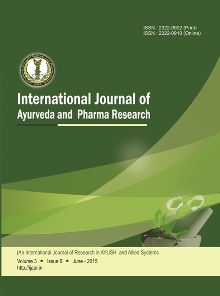Significance and Utility of Raktashali (Red Rice) in Ayurveda - A Narrative Review
Abstract
Raktashali, or red rice, recognized for its distinctive red bran and unrefined nature, holds a place of prominence in Ayurveda for its nutritional richness and therapeutic potential. Ancient Ayurvedic scriptures- including the Charaka Samhita, Sushruta Samhita, Ashtanga Hridaya, and Bhavaprakasha Nighantu repeatedly affirm Raktashali’s ability to harmonize the Tridoshas Vata, Pitta, and Kapha. It is described as having a sweet taste (Madhura rasa), cooling energy (Shita virya), light digestive quality (Laghu), and nourishing effect (Pushtiprada), making it especially beneficial in conditions such as fever, inflammation, ulcers, and overall physical debility. Ayurveda regards food as fundamental to health, and Raktashali is classified as Nitya Sevaniya Ahara, a food suitable for daily consumption owing to its role in tissue nourishment, digestive support, and immune modulation. Its applications are extensive: it plays a vital role in Samsarjana Krama, the graduated dietary regimen following Panchakarma therapies; it is recommended during monsoon (Varsha Ritu) to rekindle digestive strength (Agni); and it serves as a traditional staple in regions like Coastal Karnataka and Kerala. Modern nutritional science corroborates these benefits, identifying high levels of antioxidants, flavonoids, iron, and zinc, along with a low glycemic index that supports heart health, reduces inflammation, and aids in glycemic control. Additionally, its bran is rich in bioactive compounds, such as tocopherols, tocotrienols, and catechins- known for liver-protective and anticancer properties. By synthesizing ancient Ayurvedic wisdom with current scientific evidence, this review underscores Raktashali’s role as a versatile functional grain suitable for both therapeutic use and everyday nutrition in preventive and integrative healthcare models.
Copyright (c) 2025 International Journal of Ayurveda and Pharma Research

This work is licensed under a Creative Commons Attribution-NonCommercial-ShareAlike 4.0 International License.


